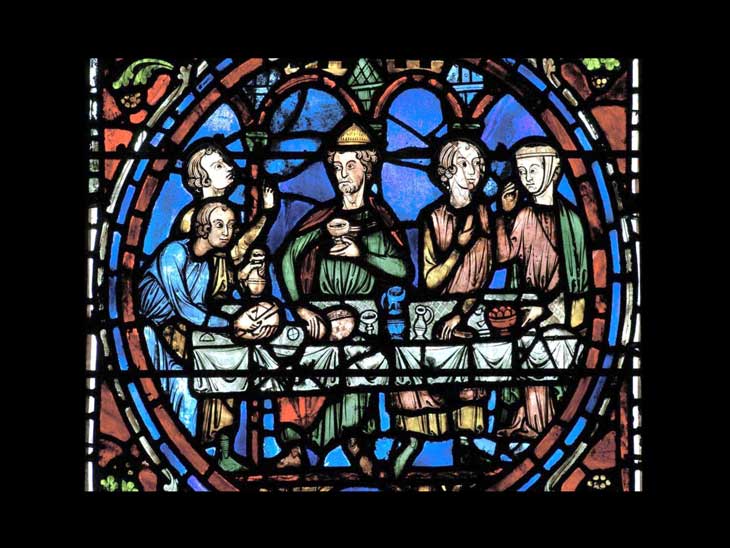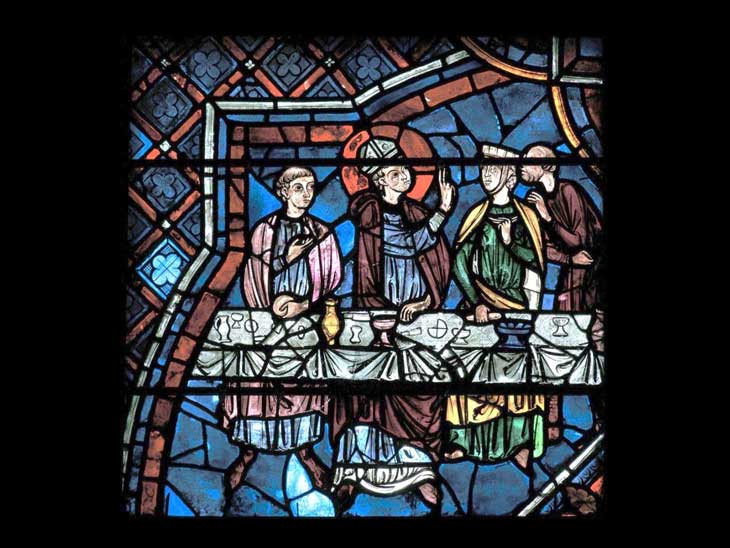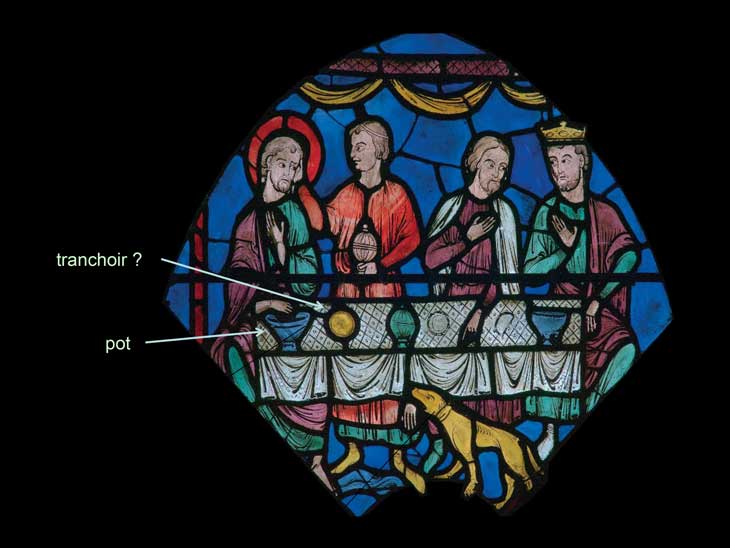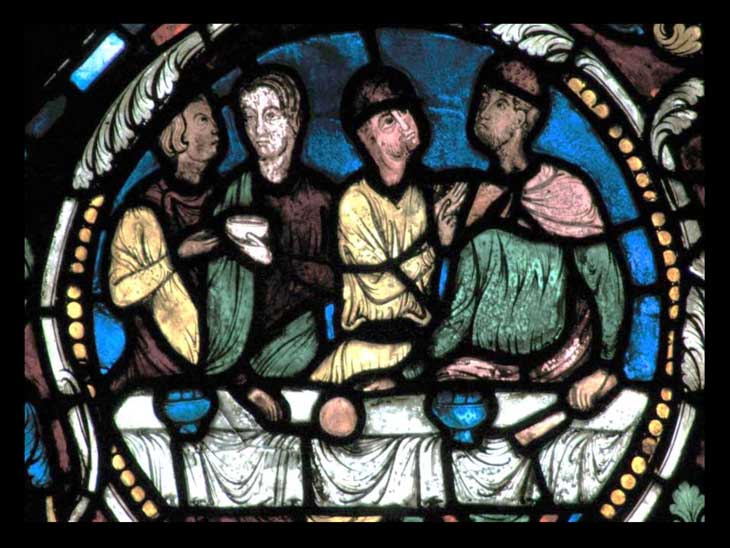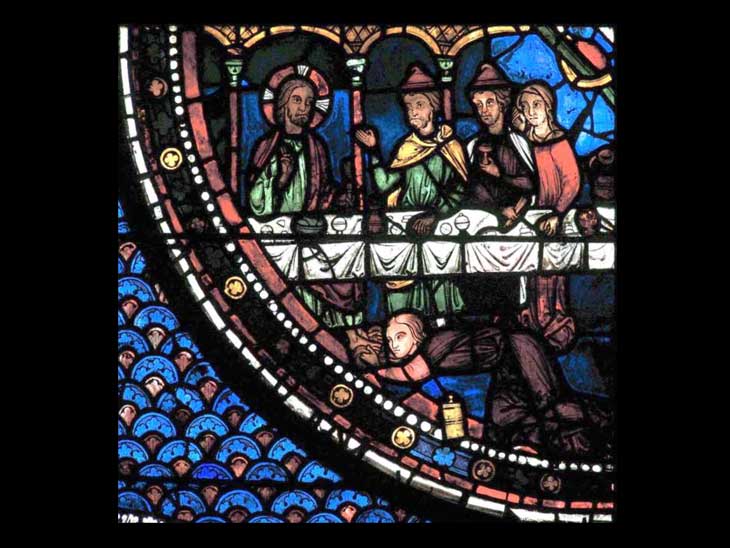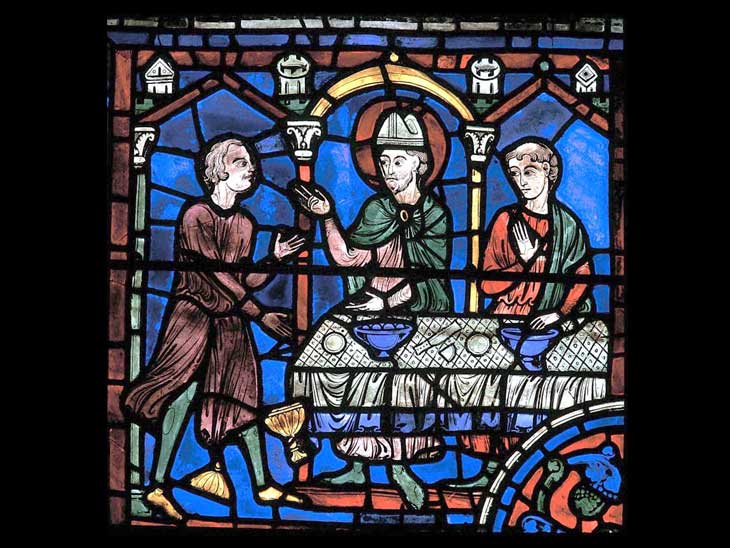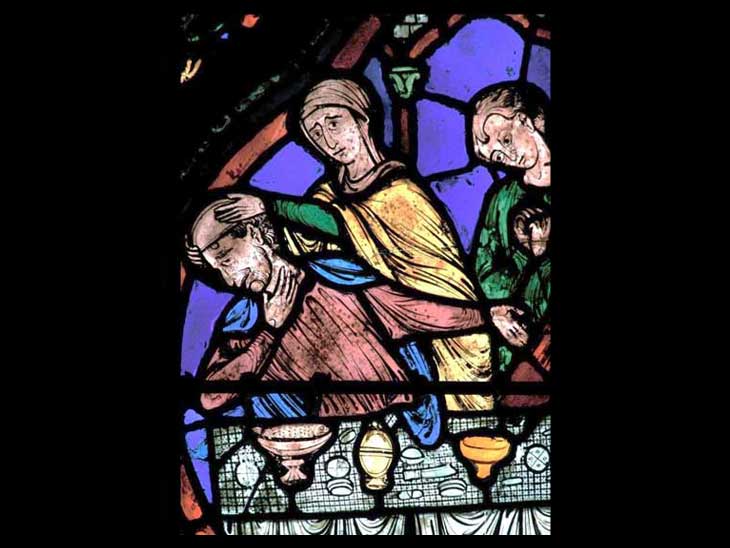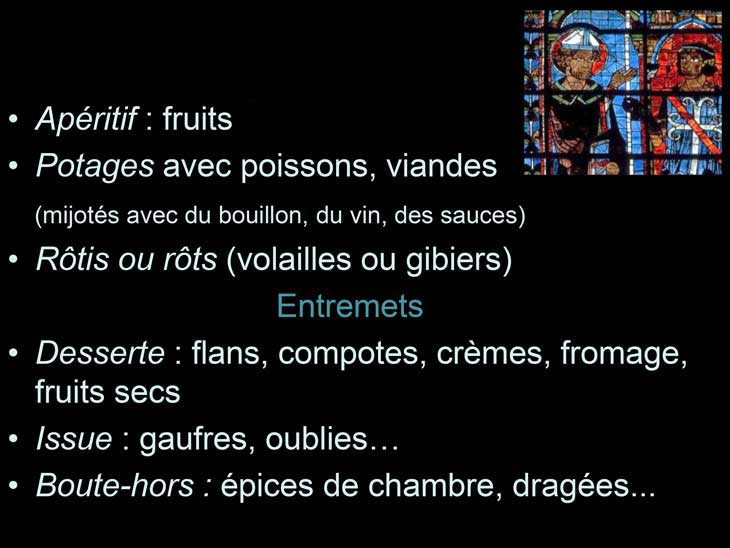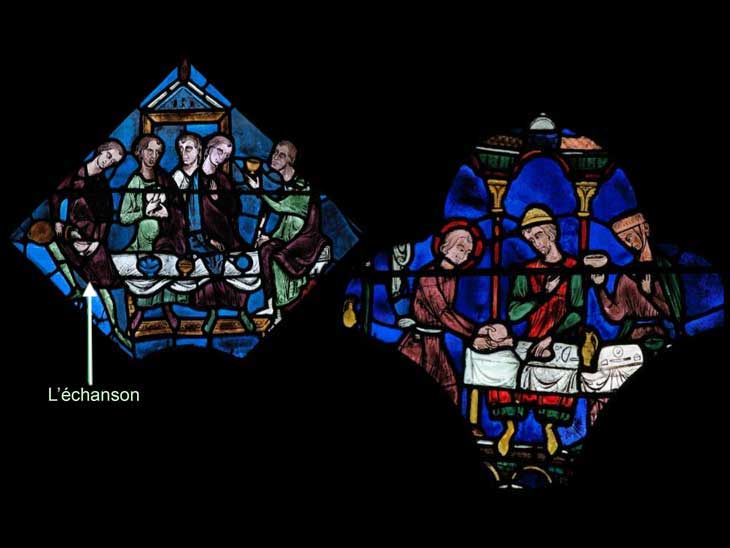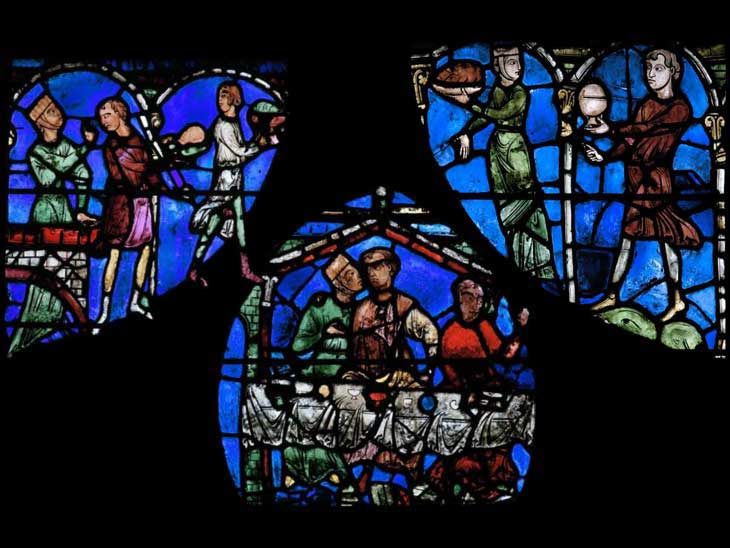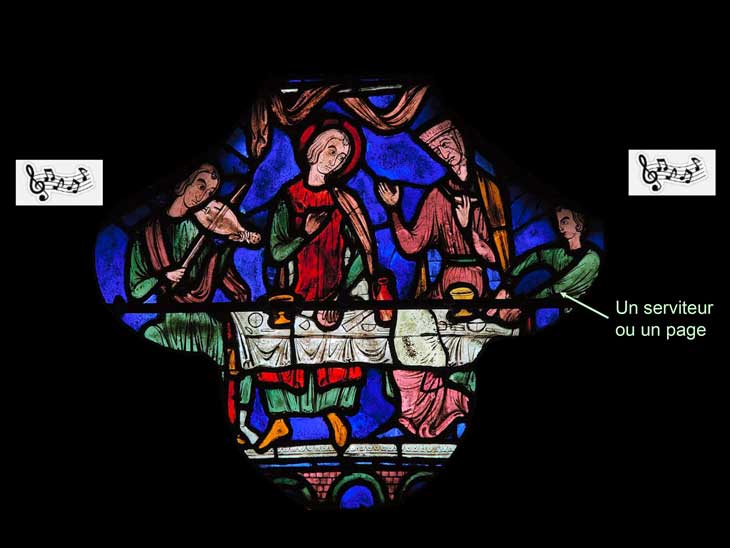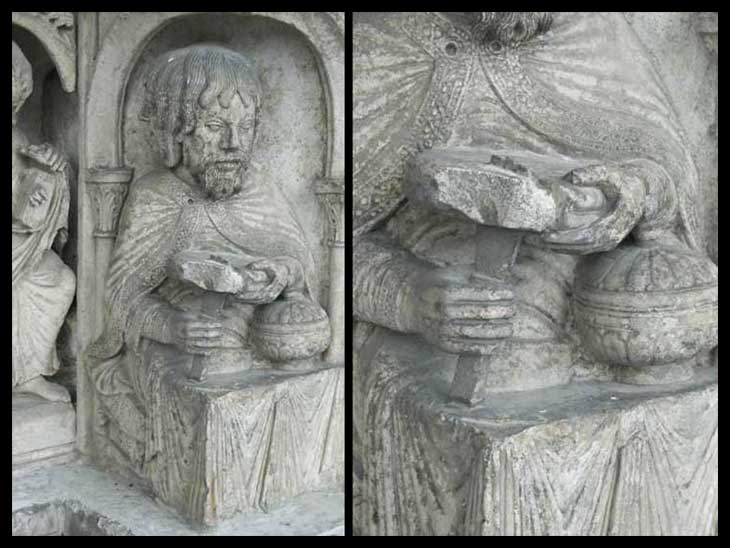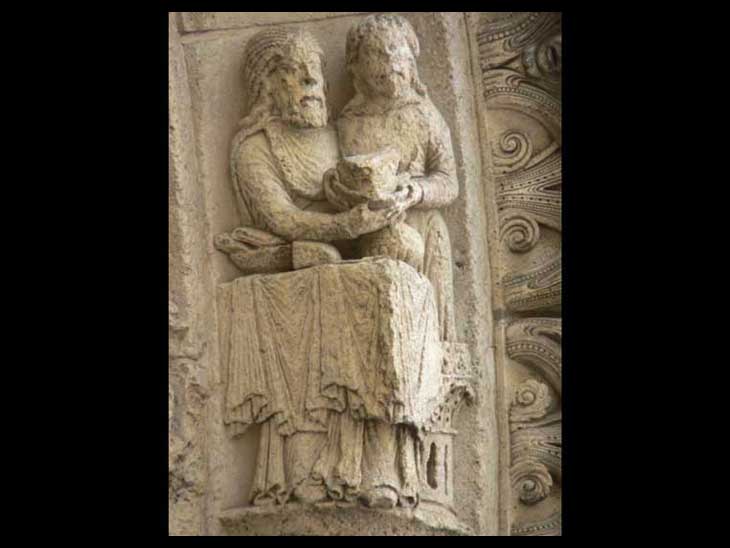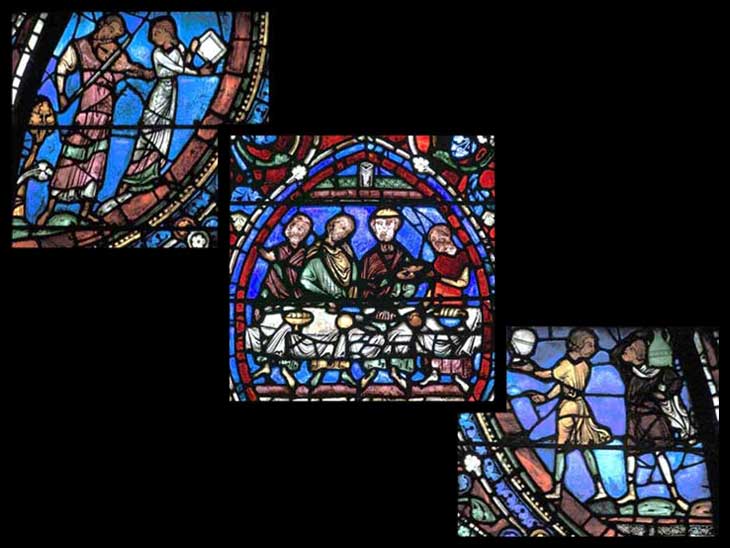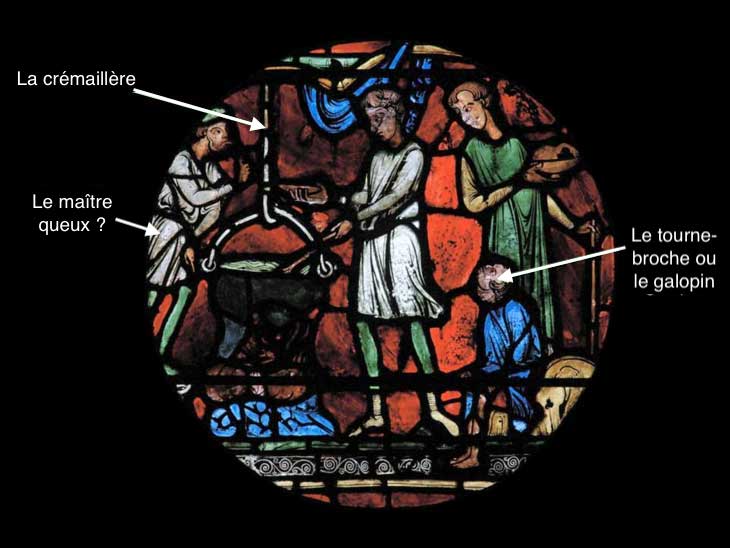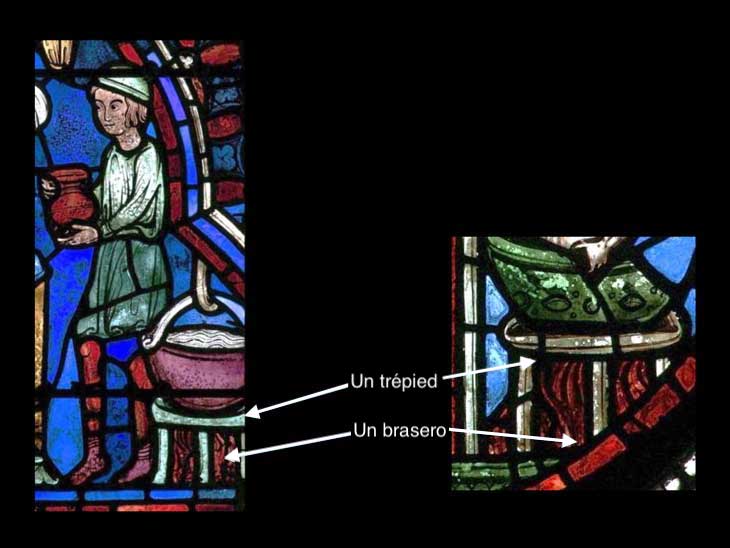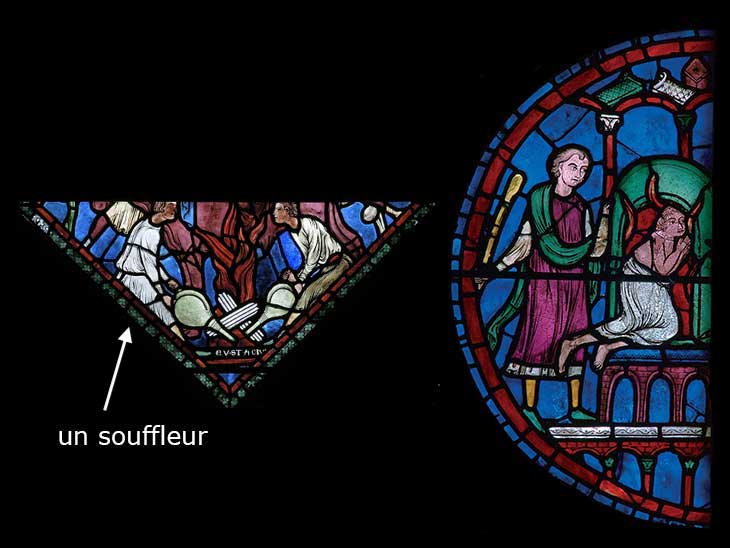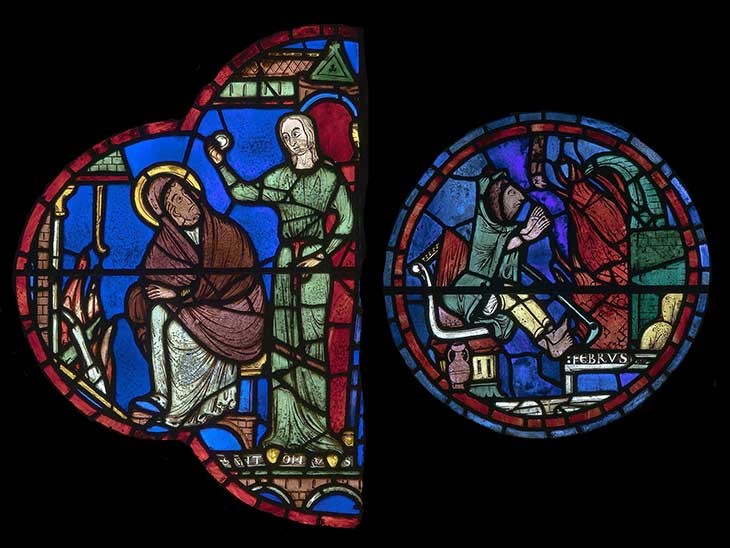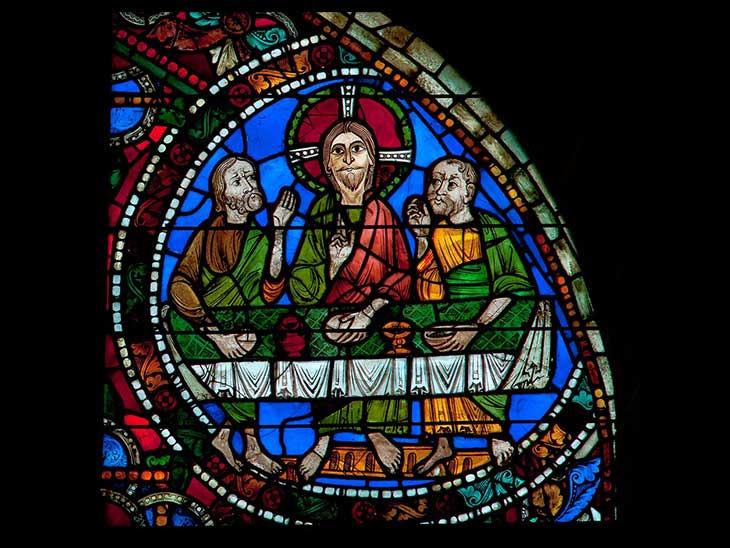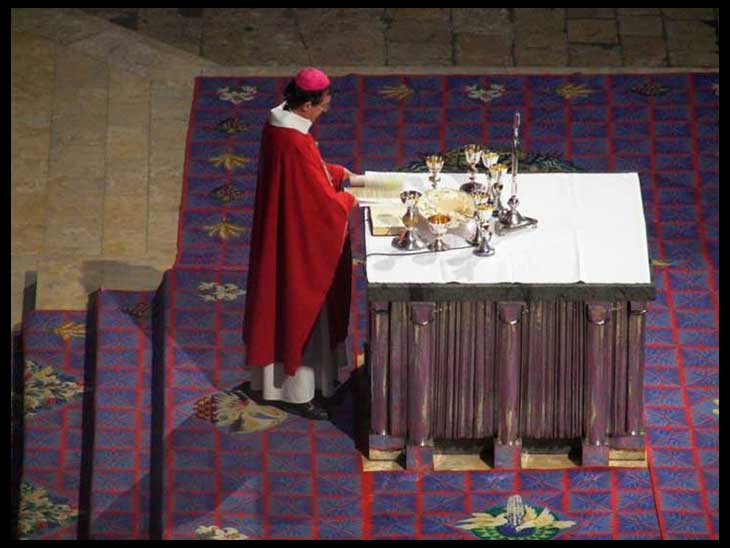It’s time for your taste buds!
Discover what our medieval ancestors ate, drank… and how they laid their table. What an art!
In the 12th and 13th centuries, people ate according to their quality: “Tell me what you eat, and I’ll tell you who you are”… So, just like clothing, the medieval meal was also a social marker.
For the working man, it’s mainly vegetarian, but the vegetables aren’t really those of today, and on his humble table, the king of foods is bread.
Aristocratic food, on the other hand, was rich in taste and color, higher in protein and spicier, and the conviviality of the meal was often characterized by a highly codified ritual: expressions still used today such as “Dresser la table”, “Mettre le couvert” and “Faire bonne chère” bear witness to this.
In the cathedral, the images of aristocratic meals engraved in glass and stone are not only “Windows to the Middle Ages”, they also often have a religious connotation… Among them, that of the Eucharistic meal, with bread and wine omnipresent.
Table manners and the unfolding of a seigneurial feast…
Article taken from the lecture “Dining with our medieval ancestors” by Véronique des Boscs,
from the Cathedral’s Visitor Service,
as part of the 2023 Autumn Cycle
